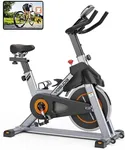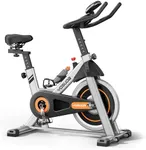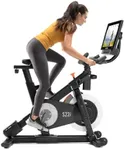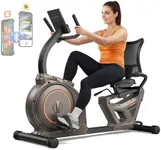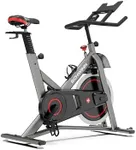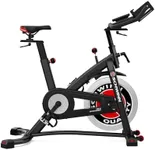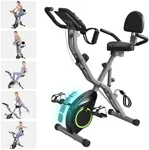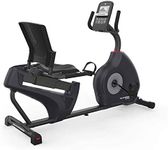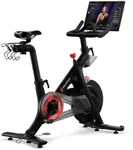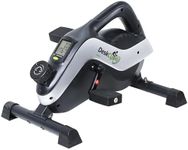Buying Guide for the Best Exercise Bikes Without Subscription
Choosing the right exercise bike without a subscription can be a great way to stay fit and healthy from the comfort of your home. When selecting an exercise bike, it's important to consider several key specifications to ensure you get the best fit for your needs. These specifications will help you understand the bike's features and how they align with your fitness goals and preferences.Type of Exercise BikeThere are three main types of exercise bikes: upright, recumbent, and indoor cycling (spin) bikes. Upright bikes are similar to traditional bicycles and are great for general fitness. Recumbent bikes have a reclined seating position, providing more back support and are ideal for those with back issues or limited mobility. Indoor cycling bikes are designed for high-intensity workouts and simulate outdoor cycling. Choose the type that best matches your fitness level and workout preferences.
Resistance LevelsResistance levels determine how hard you have to pedal to move the bike. This is crucial for tailoring your workouts to your fitness level and goals. Bikes typically offer magnetic, friction, or air resistance. Magnetic resistance is quiet and smooth, friction resistance is more affordable but can be noisier, and air resistance increases with your pedaling speed, providing a more dynamic workout. Beginners may prefer lower resistance levels, while more advanced users might look for higher resistance options.
AdjustabilityAdjustability refers to how much you can customize the bike to fit your body. This includes seat height, handlebar position, and sometimes even pedal straps. Proper adjustability ensures a comfortable and ergonomic workout, reducing the risk of injury. If multiple people will use the bike, look for one with a wide range of adjustments to accommodate different body sizes and shapes.
Display and Console FeaturesThe display and console features provide important workout data such as time, speed, distance, calories burned, and heart rate. Some bikes also offer pre-programmed workouts and connectivity options for tracking progress. A clear, easy-to-read display can help you stay motivated and monitor your progress. Consider what data is most important to you and choose a bike that provides those metrics.
Weight CapacityWeight capacity indicates the maximum user weight the bike can safely support. This is important for ensuring the bike's durability and your safety. Most exercise bikes have a weight capacity ranging from 250 to 350 pounds. Choose a bike that can comfortably support your weight, and if multiple users will be using it, consider the highest weight among them.
Footprint and PortabilityThe footprint is the amount of space the bike occupies, and portability refers to how easy it is to move the bike. If you have limited space, look for a compact bike with a smaller footprint. Some bikes come with wheels for easy movement, which is useful if you need to store the bike when not in use. Consider your available space and how often you might need to move the bike when making your choice.
Comfort FeaturesComfort features include the quality of the seat, handlebars, and overall design. A well-padded seat and ergonomic handlebars can make a big difference in your workout experience, especially during longer sessions. Look for bikes with adjustable and cushioned seats, as well as comfortable handlebar grips. Test the bike if possible to ensure it feels comfortable for you.
